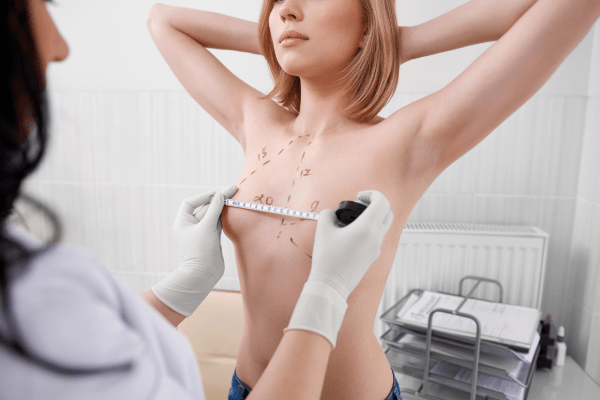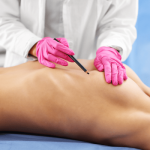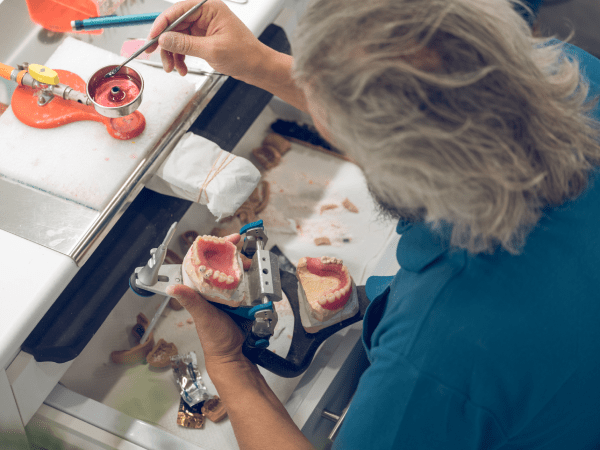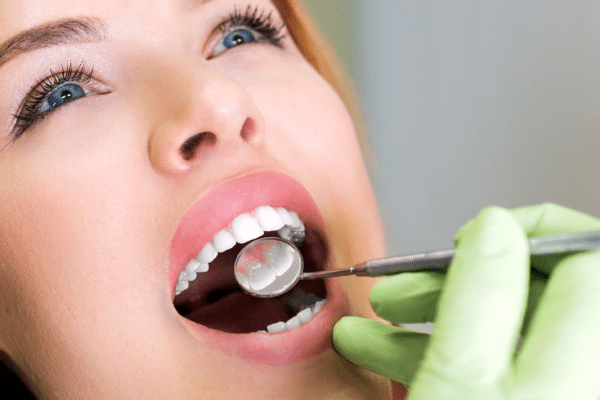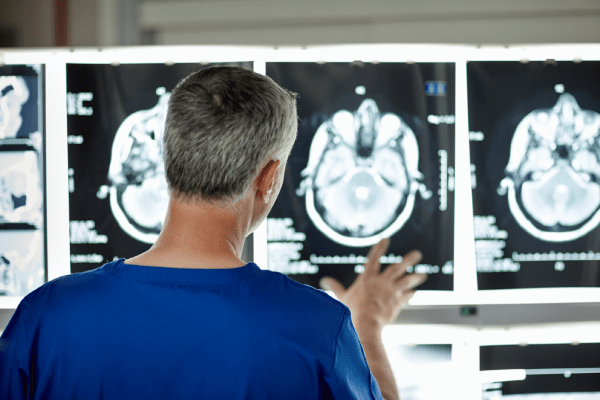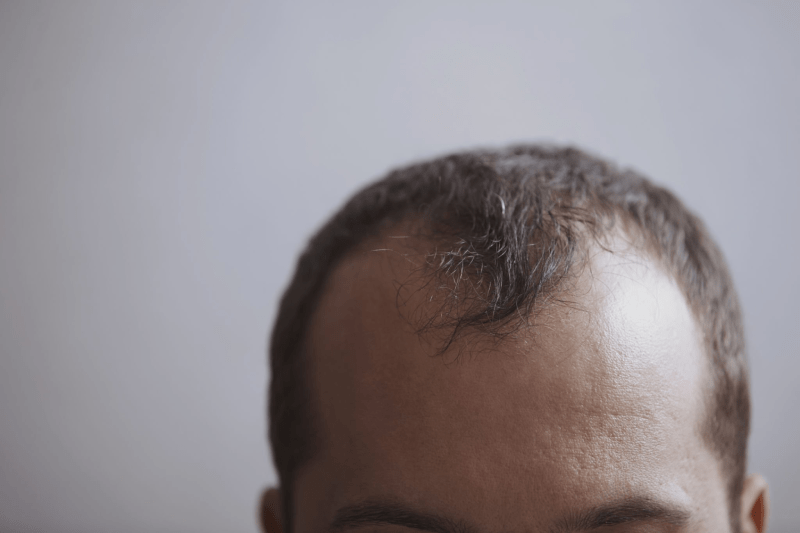What is Breast Cancer Treatment?

Breast cancer is a tumor that develops from an abnormal development of breast cells and is felt as a lump or mass. These tumor cells might be malignant (cancerous) or non-cancerous. The cancer cells can spread to other regions of the body, including the breast, lymph nodes in the armpits, and other organs. Treatment and prognosis for breast cancer are mostly determined by the kind, spread, stage, and overall health of the patient.
What are the Symptoms of Breast Cancer?
Breast cancer symptoms can be easily recognized at home with breast self-examination. You should talk to your doctor about how to do this check at home.
The following are the most frequent breast cancer symptoms:
Breasts that have changed in size or form
Breast enlargement
Swelling of the armpits
The color and form of the nipples change.
On the breast skin, there is a rash, redness, or pitting.
Inflammation of the breasts or armpits
Nipple discharge that is abnormal
Severe redness and itching may be present in cases of more aggressive breast cancer, known as inflammatory breast cancer.
Patients should call their doctor as soon as they discover any of the signs and symptoms of breast cancer.

How to Diagnose Breast Cancer?
Additional tests are frequently used by doctors to detect or diagnose breast cancer. They may recommend women to a surgeon or a breast specialist. This does not indicate that she has cancer or that surgery is required. These physicians are specialists when it comes to detecting breast issues.
Ultrasound of the breasts. Sonograms are detailed images of regions inside the breast created by a machine that employs sound waves.
Mammogram for diagnosis. Doctors may order a diagnostic mammography if you have an issue with your breast, such as lumps, or if a region of the breast seems suspicious on a screening mammogram. This is a higher-resolution X-ray of the breast.
Magnetic resonance imaging (MRI) is a type of imaging that (MRI). A type of body scan that employs a computer and a magnet. The MRI scan will produce comprehensive images of the breast’s inside.
Biopsy. This is a procedure that involves removing tissue or fluid from the breast to be examined under a microscope and subjected to further testing. There are several types of biopsies (for example, fine-needle aspiration, core biopsy, or open biopsy).
PET Scan for Breast Cancer
PET scans for breast cancer are imaging tests that employ a radioactive material (called a tracer) to detect the spread of breast cancer. This tracer can assist detect cancerous spots that an MRI or CT scan may miss.
PET scanning necessitates the use of a tiny quantity of radioactive material (tracer). The tracer is injected into a vein (IV) on the inside of your elbow or a tiny vein in your hand. The tracer travels through your bloodstream, collecting in organs and tissues and emitting a signal that allows the radiologist to better view specific regions or diseases.
As your body absorbs the tracer, you’ll need to be close by. It generally takes approximately an hour to do this task.
You’ll then lie down on a small table that glides inside a huge tunnel-shaped scanner. The signals emitted by the tracer are detected by the PET scanner. The results are then converted into 3D images by a computer. Your doctor will be able to see and interpret the photos on a monitor.
Treatment for Breast Cancer in Turkey
Breast cancer can only be totally cured by surgical therapy. The likelihood of surgery is determined by the stage at when the pathology is discovered, as well as the tumor’s aggressiveness (histological and molecular type). The treatment is tailored to the specific form of cancer. There are three forms of cancer: primary resectable – one that can be removed; locally progressed – usually unresectable, although surgery can be done after conservative treatment; metastatic or recurring breast cancer – drastic surgical treatment is not possible. Systemic therapy is usually reserved for patients who have reached the end of their therapeutic options. Hormone treatment, targeted therapy, and chemotherapy are all examples of this.
The doctor selects the most appropriate breast cancer treatment strategy for the patient. The decision may rely upon the amount of dissemination, the overall health of the patient, the stage and the kind of breast cancer (inflammatory, cancer during pregnancy, lobular carcinoma, ductal carcinoma and invasive breast cancer).
A surgeon, a medical oncologist, and a radiation oncologist make up the breast cancer therapy team.
Treatment for the Stages of Breast Cancer in Turkey
Stage 0 Breast Cancer Treatment in Turkey:
0th stage Lumpectomy or sectoral resection — organ-preserving procedures on the breast – are performed by the surgeons. The margin of the resection is checked. If cancer cells are discovered, the scope of the surgery will be increased. In order to create symmetry, the procedure might be performed on another breast at the same time. Radiation treatment may be given for some individuals. Its importance is defined by the patient’s risk of cancer development. Irradiation starts 1-3 months after surgery, but not before the incision has totally healed. Hormone treatment is not usually used. It may be given for some individuals with a positive tumor resection margin.

Stage 1 Breast Cancer Treatment in Turkey:
Organ-preserving surgery is the most common treatment for breast cancer. The breast can sometimes be completely removed. According to the indications, the axillary lymph nodes are excised. A mastectomy can be followed by implant-based breast reconstruction. These procedures can sometimes be done at the same time. Radiation treatment is always used after organ preservation procedures. It can only be administered after mastectomy if a positive resection margin is found or the tumor cells are less than 1 mm from the margin. Within 1-3 months, the irradiation will commence, and it will be done five days a week. After surgery, some patients may be administered chemotherapy, although this is not a typical practice.
Stage 2 Breast Cancer Treatment in Turkey:
For some molecular kinds of breast cancer, radiation treatment can be coupled with hormone and targeted therapy. However, it is rarely used in conjunction with chemotherapy. If chemotherapeutic drugs are needed, the irradiation will be done 3-4 weeks after the treatment is completed. This method lowers the likelihood of cancer treatment problems. Adjuvant medication therapy is frequently used in the treatment of stage 2 cancer. It lowers the chances of breast cancer recurrence and death from the illness. The treatment plan is determined by the breast cancer’s molecular and biological subtype (the presence of hormone receptors, HER2 positive or negative cancer).
Stage 3 Breast Cancer Treatment in Turkey:
The majority of individuals with stage 3 breast cancer cannot be operated on without first taking precautions. The majority of these tumors are unresectable. They may become operable following cancer therapy with drugs. Neoadjuvant therapy is a type of pre-surgery treatment. It enables the clinician to achieve the following outcomes: reduce the tumor, making the cancer resectable; identify a group of patients with a good prognosis in order to plan future therapeutic strategies.
Stage 4 Breast Cancer Treatment in Turkey:
It is not suitable to have a drastic therapy. Palliative topical treatment, as well as systemic therapy, which attempts to limit tumor growth, will become the treatment of choice if distant metastases arise.
How Is the Recovery from Breast Cancer Treatment in Turkey?
When compared to other forms of essential tumors, recovery after breast cancer therapy is less difficult and distressing. There are, however, some changes that breast cancer patients may experience following therapy. The following are some of the changes:
During chemotherapy and radiation therapy, breast cancer patients’ menstrual cycles are virtually invariably disrupted. After the therapy, the patient goes through a temporary menopause that lasts for many months. As a result, the patient should anticipate to suffer certain menopausal symptoms such as tiredness, mood swings, and hot flushes.
The therapy has an effect on the woman’s fertility. As a result, individuals may be physically and emotionally damaged, and they may require considerable emotional support during the healing time.
As part of the therapy, the afflicted breast or both breasts are surgically removed in some women. As a result of their altered bodily experience, individuals may lose their confidence. They can, however, get cosmetic surgery to restore the size and form of their breasts.
How Much Does Breast Cancer Treatment Cost in Turkey?
Cancer treatment in Turkey is less expensive than in other European nations. The cost of breast cancer therapy in Turkey is determined by the clinic where you intend to receive treatment. Breast cancer treatment costs an average of 10,000 (€). The cost of the procedure covers the recovery period as well.
Factors effecting the cost of breast cancer in Turkey;
the fee of doctors and hospitals (the price is affected by doctors’ experience, popularity, or having a unique treatment method);
the cost of the diagnostic package (depends on what procedures are included in the package, their complexity and uniqueness);
treatment method (for each specific case and stage it is different, depending on the method or their combination the price will be different);
accommodation options (choice of private rooms or room rates in the hotel, the price of food and baverages, etc.).
Lumpectomy – 6000-9700 $;
Mastectomy with reconstruction – approximately $ 10 000 $;
Chemotherapy – for a course of 670-4200 $;
Hormone therapy, radiotherapy, targeted therapy – individually.
What Are the Prices for Breast Cancer Diagnostics in Turkey?
You should note that these are the approximate prices and they may change from hospital to hospital or doctor to doctor.
Oncologist’s consultation – 100-160 $;
Laboratory research – 200-500 $;
Mammography – 120-220 $;
Ultrasound – 80-200 $;
Biopsy – 2000-2800 $;
PET – 900-1200 $;
Biopsy under ultrasound control – from 2000 $;
CTC – 800 € (unique analysis, only in Anadolu);
The whole complex of diagnostics (approximate cost) depending on the stage and complexity – 2000-4500 $ and more.

What is the Top Country for Breast Cancer Treatment?
Turkey is a world leader in cancer treatment and diagnostics. As a result of the lower costs of breast cancer treatment in Turkey, an increasing number of patients have traveled to Turkey in search of better care. Turkey regularly ranks well in the treatment of a variety of malignancies, including prostate, breast, and adult brain tumors, and has a good 5-year survival rate. It considered as one of the best countries for breast cancer.
Is Turkey Good for Breast Cancer Treatment?
You may wonder “Is Turkey good for breast cancer treatments?”. Despite the fact that Turkey’s cancer centers are not well-known, they have significant benefits over clinics in other countries. The following are some of the benefits of cancer therapy in Turkey:
High-quality medical care
The treatment method complies with all of the World Health Organization’s regulations and guidelines
There will be no “overdiagnosis”
Treatment at a reasonable price
There is no linguistic barrier
Throughout the therapy, quality control of the services offered
Each patient is protected by the law.


